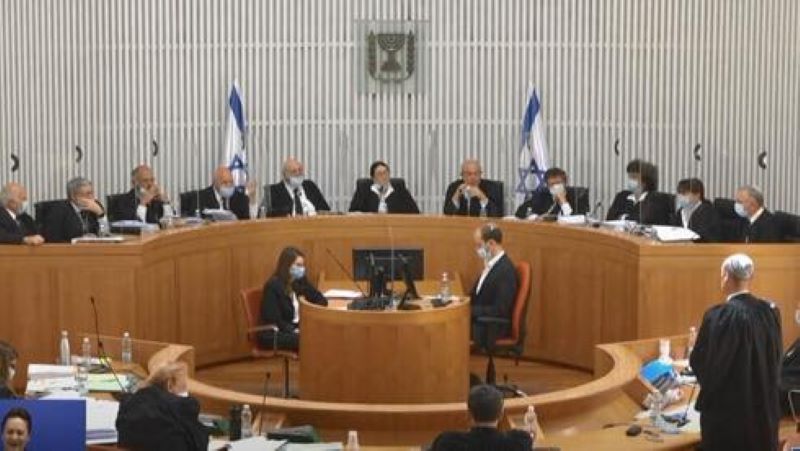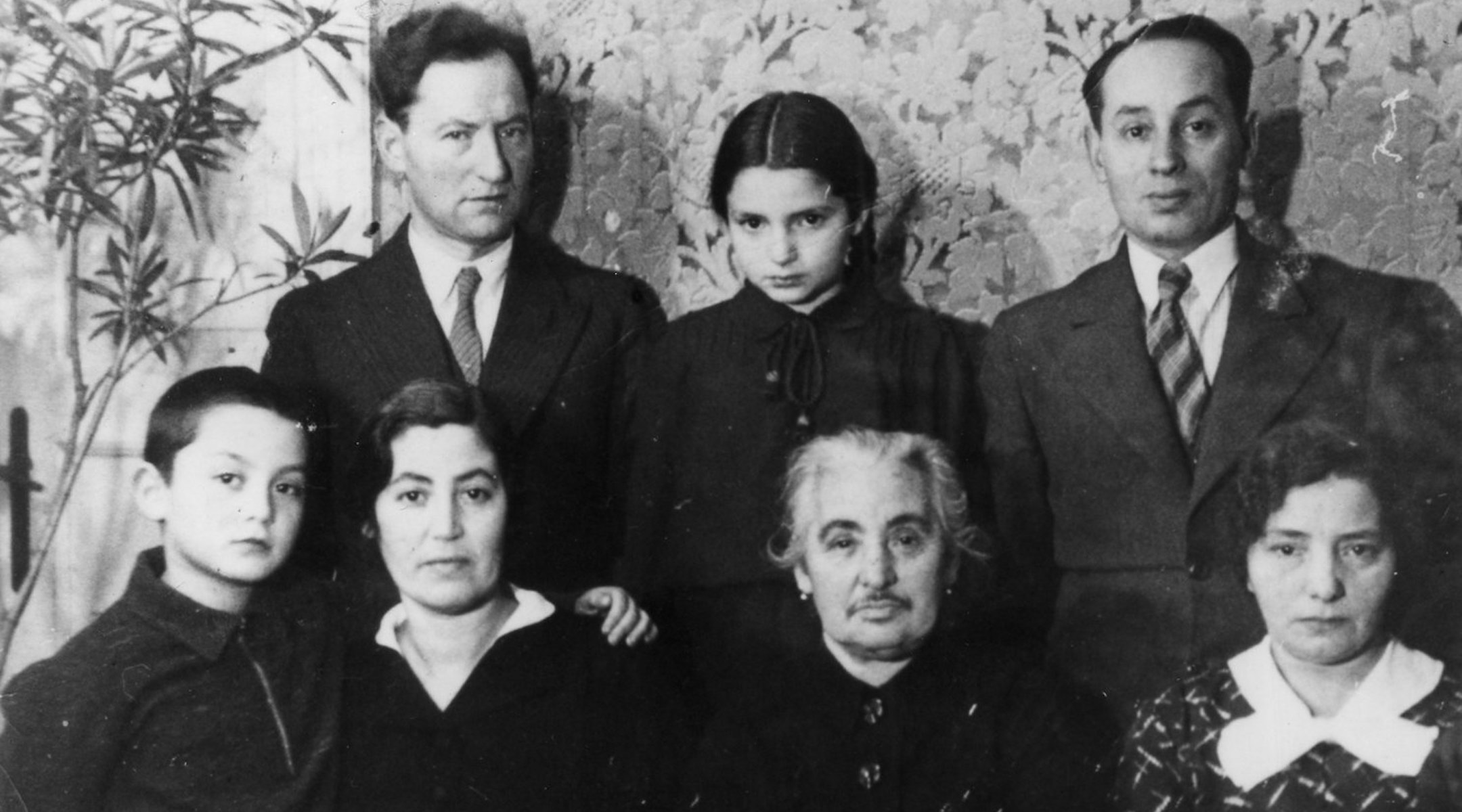Two Israel Defense Forces soldiers were killed last month while securing the United States’ humanitarian aid pier off the coast of Gaza, an Israeli military source deployed to the Strip told JNS.The Biden administration project was plagued by technical and logistical dysfunction and is now being decommissioned by the Pentagon.
“What led me to talk is really just the frustration towards the end of the last few weeks. It’s a very unsafe operation; anything could happen,” the source said. “They [the United States] could have delivered the aid through any land port and finished within a week, but for whatever publicity reason they built the pier. Then they failed and tried to cover it up.”
On June 15, IDF tanks based at a makeshift military outpost set up near the pier ran over a large IED some 400 meters north of it, killing two soldiers and wounding two others, according to the source.
“The operation was conducted in defense of the pier. Anything that occurred in the area, they [the Israeli troops] were responsible for protecting it [the pier],” the source said. “Ultimately, the reason they were engaging these terrorists is because they posed a threat to the forces protecting the aid,” he added.
“The mission was in support of the larger goal of protecting the pier and occurred within that context. Soldiers would not have been positioned within these areas otherwise,” he told JNS.
On June 16, the IDF announced that Capt. (res.) Eitan Koplovich, 28, from Jerusalem, and Warrant Officer (res.) Elon Waiss, 49, from Psagot, were killed in northern Gaza. Both served in the 8th Reserve Armored Brigade’s 129th Battalion.
Two other troops were seriously wounded in the attack, according to the military.
Hamas had targeted the tank with explosives.
JNS reached out to the IDF twice to confirm the veracity of source’s claim. Both times, the military referred JNS to its website and Telegram channel “for information regarding fallen soldiers.”
The U.S. military’s Central Command (CENTCOM), which is responsible for operations in the Middle East, referred JNS back to the IDF.
“I know that my father was very close to the location of the pier. He told us even before he was deployed that he would be located around there. I don’t remember him saying anything about guarding it though. All I know is that he was close to it,” Elon’s son Yedidya Waiss, 27, told JNS.
“The IDF told us that he was on a mission to destroy a Hamas compound, weapons and tunnels when he was killed. They told us about how they heroically rescued the bodies of my father and of Eitan and the two other wounded soldiers,” he continued.
“They did not mention anything about the pier, because he was deployed close to it. There may have been a connection, but the IDF did not directly mention it,” he added.
The son explained that his father was mobilized on June 3 and entered Gaza three days later. Before that, he was deployed in the north together with Koplovich.
“Eitan’s wife was expecting a baby while they were in the north so he had to go on leave for a month and a half. My dad was very happy to see him come back,” Yedidya Waiss told JNS.
Elon Waiss had asked to be mobilized a day late so that he could help his daughter, who had just gotten married, prepare her new home.
“We didn’t really worry. He kept telling us that he was near the Netzarim Corridor [controlled by the IDF and separating northern and southern Gaza], and that it was not like fighting in Rafah or Jabalia. We were really interested to know how his death could happen, but when the IDF mentioned that he was out on a mission, we stopped asking,” said Yedidya Waiss.
Koplovich was mobilized on Oct. 7 and served in the north, according to his brother Ishay.
When his son was born in November, he returned home for a few weeks. He was redeployed until late January, when he was released to continue his studies.
Eitan was called up again in June and was sent to Gaza.
“Eitan was close to the pier, he told me that he was sitting on the water close to it, about 100 yards away,” Ishay told JNS.
“I served in the IDF for 25 years in the reserves. Something can happen in any kind of battle, I can’t really blame anyone. You can always find yourself in the wrong place and at the wrong time,” he said.
“I don’t think that what Eitan did in the week and a half that he was in Gaza had to do with humanitarian aid. The pier was working but I don’t think it was something that affected him too much,” he continued.
While he is not aware of the specifics of Eitan’s mission, he assumes his brother was securing the Netzarim Corridor.
“The IDF wasn’t there because of the pier. The United States, however, was there because they were looking for the safest place to set up the pier. They put it on the beach in the area at the end of the Netzarim route,” he said.
“They were looking for a location under strong Israeli control. They couldn’t exactly put it on Gaza City beach,” he added.
“I guess that his side mission was to protect the pier, but his brigade would have been there regardless. Nobody that I spoke to in the army mentioned the pier as a factor in relation to the mission,” he concluded.
On Wednesday, U.S. Central Command declared mission accomplished. The pier, whose technical name is Joint Logistics Over-the-Shore, “has achieved its intended effect to surge a very high volume of aid into Gaza and ensure that aid reaches the civilians in Gaza in a quick manner,” Vice Adm. Brad Cooper, deputy commander of CENTCOM, told reporters.
The United States has delivered almost 20 million pounds of aid via the pier “in a cost-effective manner,” according to the Pentagon.
Announced by President Joe Biden during his State of the Union address in March, the $230 million floating dock was intended to increase the flow of humanitarian aid into Gaza via a Mediterranean Sea route from Cyprus. But it was plagued with problems since it began operations just over two months ago.
The pier was damaged by high winds and heavy seas in late May and removed for repairs after only around a week of operation. Four support boats broke off the structure and became beached, and a portion of the causeway was damaged and also broke off.
“When the pier broke the first time, it was a lot more dangerous than they made it sound. It sounded like they were on top of things, but Israel had to fix it all for them,” the source told JNS. “Everything they tried to accomplish, whether it was a defensive operation or daily operations, nothing went without a hitch.
“There were many tunnels in the area that had not yet been found or had been found but not destroyed. [Gazan] snipers took shots at us from high buildings in the area. I had a bullet go pretty close to my head,” he added.
In May, three U.S. soldiers sustained noncombat injuries while working on the pier, including one who was critically hurt and evacuated to an Israeli hospital.
U.S. forces took extraordinary steps to maintain the appearance that no troops were operating in the Gazan enclave, the source explained.
“Sometimes, they would lay out mats on the floor and walk into Gaza because technically that’s ‘no boots on the ground.’ They deceived the public into thinking they’d carried out something that they did not,” he said.
The pier was reconnected on June 7 but removed again due to bad weather a week later, right around the time the two soldiers were killed. It was quickly put back but was removed again on June 28 due to heavy seas.
Parts of the pier washed up at Tel Aviv’s Frishman Beach in late June.
In the first week after the pier became operational, some three-fourths of the humanitarian aid transported from the dock was stolen by unspecified Gazan actors while en route to a U.N. warehouse. Afterwards, very little of the aid transferred to Gaza was actually picked up to be distributed.
“The food sat in the sun for a month and a half with rats and dogs eating out of it. Bags of flour either arrived damaged or got destroyed by animals. As of last week, a lot of it was no longer viable. As for canned food sitting out in the sun, it probably is salvageable if it eventually gets picked up by the U.N.’s World Food Programme,” the source told JNS.
“We were supposed to be able to deliver 30 trucks of humanitarian aid a day to Gazans, which is insignificant in comparison to what comes through land crossings,” he continued. “Each truck contains between 18 to 22 pallets. But this goal fluctuated tremendously. There were days when the pier was down, the equipment didn’t work, nothing was accomplished.”
Most of what has been told to the public regarding the pier is inaccurate, according to the source. “A lot of the information is outright false or embellished and for the most part the operation was a complete failure,” he said.
“There were many other ways [to deliver aid] that were efficient and safer. They [the United States] did it for good media attention. When the media came, they’d use the best equipment. It was very much a show, everything would magically work smoothly somehow. They weren’t really concerned about getting food to Gaza, it was secondary at best for them,” he added.
According to the source, the pier was returned to its location off the coast of Gaza last week but could not be redocked.
“They ended up beaching the whole thing—a pretty epic failure. They spent the rest of the day trying to get the pier off the beach, and they took it straight to Ashdod for repairs,” he said.
CENTCOM’s Cooper said on Wednesday that future aid will come through the port of Ashdod. “In the coming weeks, we expect that millions of pounds of aid will enter into Gaza via this new pathway,” he said.

















